Alta Ingeniería!!
Alta ingeniería!!

The new “front door” of the ISS is now open for business with the next generation of space vehicles! US EVA-36 spacewalkers Jeff Williams and Kate Rubins installed the International Docking Adapter (#2) on the front of the ISS this morning.
More Posts from Novato-curioso-blog and Others

 What’s that in front of the Moon? It’s the International Space Station. Using precise timing, the Earth-orbiting space platform was photographed in front of a partially lit Moon last year. The featured image was taken from Madrid, Spain with an exposure time of only 1/1000 of a second. In contrast, the duration of the transit of the ISS across the entire Moon was about half a second. The sun-glinting station can be seen just to the dark side of the day / night line known as the terminator. Numerous circular craters are visible on the distant Moon, as well as comparatively rough, light colored terrain known as highlands, and relatively smooth, dark colored areas known as maria. On-line tools can tell you when the International Space Station will be visible from your area.
Object Names: Moon, ISS
Image Type: Astronomical
Credit: Dani Caxete
Time And Space>b
Por favor disfruten las imágenes de la aurora boreal, son colosales!!!!

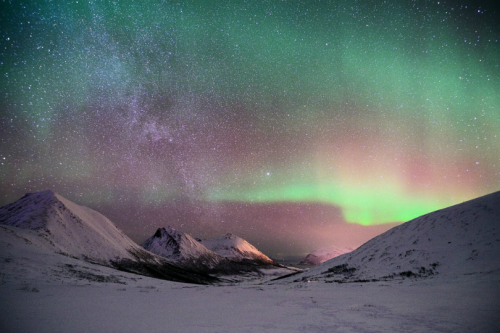


Nightsky / Tromvik, Norway by John A Hemmingsen
Ohhhh yo quiero una casa en un árbol como esta!!!!!

Tree House | Instagram | Facebook
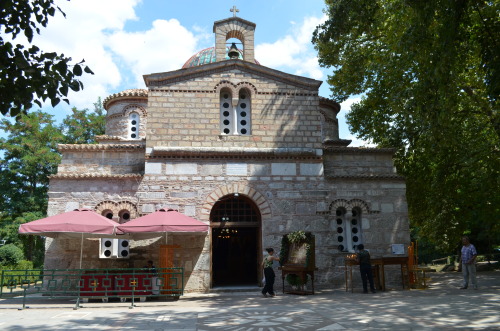
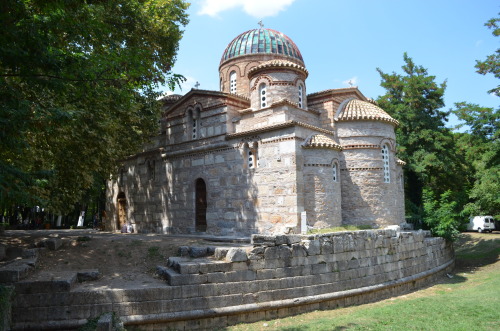
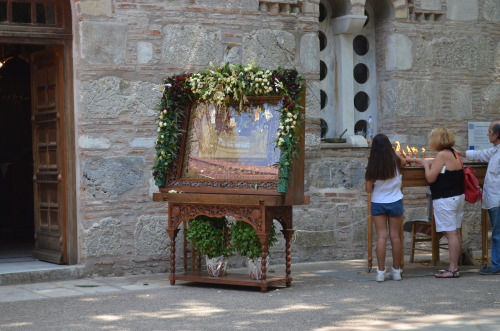
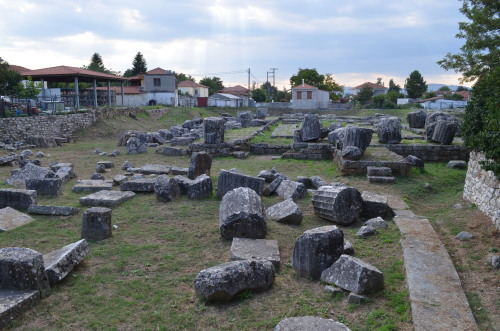
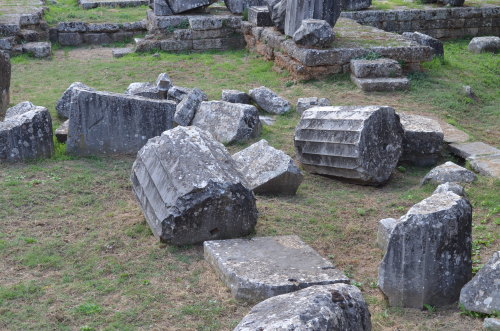
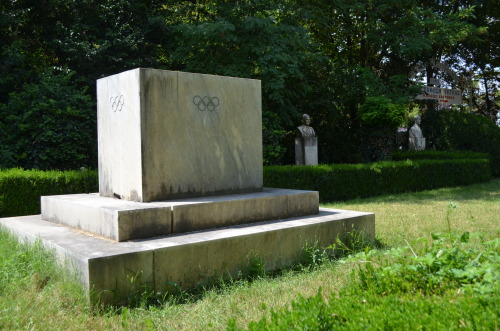
I also visited Tegea- but I didn’t make it to the museum, mostly due to bad planning. I arrived quite early but the Episkopi area was so refreshing that I postponed going back to the village for the museum until it was too late.
The Byzantine Church of Episkopi, devoted to the Dormition of the Virgin, is actually built on the ancient theater of Tegea. Tegea was a large city in a flat plain with no neighboring hills, so the theater was actually built from scratch. When I arrived it was the last day of a yearly fair that has been officially going on since 1893. The fair is held during the panhellenic celebration of the 15th of August, a day that is dedicated to the Virgin Mary. Apparently in the antiquity during the same annual period, another Virgin goddess was celebrated across Greece, the goddess Athena. Athena was also worshipped in Tegea during the antiquity. A massive temple, now at the village near the museum, dedicated to her can be visited.
Tegea was also the home of the 3rd century B.C poetess Anyte.
Now a small, even obscure village in Arcadia, Tegea still amazes with its contemporary history. It was here that the torch flame relay from Olympia to any city that hosts the Olympic Games was first conceived. Apparently in 1934 the International Olympic Committee was brought to the site. Inspired by the ancient monuments and the beauty of nature they decided to attempt the first relay for the Olympic Games of Berlin, in 1936.
Arte en ruedas! Qué tal eh?

Nuestro maravilloso planeta!!!

by Brock Sanders
Algún día visitaré este hermoso país.

Warsaw, Poland

One of the brightest galaxies in planet Earth’s sky is similar in size to our Milky Way Galaxy: big, beautiful M81. The grand spiral galaxy can be found toward the northern constellation of the Great Bear (Ursa Major). This superbly detailed image reveals M81’s bright yellow nucleus, blue spiral arms, tell tale pinkish star forming regions, and sweeping cosmic dust lanes with a scale comparable to the Milky Way. Hinting at a disorderly past, a remarkable dust lane actually runs straight through the disk, to the left of the galactic center, contrary to M81’s other prominent spiral features. The errant dust lane may be the lingering result of a close encounter between between M81 and its smaller companion galaxy, M82. Scrutiny of variable stars in M81 has yielded one of the best determined distances for an external galaxy – 11.8 million light-years. M81’s dwarf companion galaxy Holmberg IX can be seen just above the large spiral.
Object Names: M81
Image Type: Astronomical
Credit: Ken Crawford (Rancho Del Sol Observatory)
Time And Space
Que hermoso animal. Por favor colaboremos con su preservación!!

Tundra Gray Wolf by Cheryl Nestico
-
 curiousandapathetic reblogged this · 8 years ago
curiousandapathetic reblogged this · 8 years ago -
 m007idi reblogged this · 8 years ago
m007idi reblogged this · 8 years ago -
 laceysmile reblogged this · 8 years ago
laceysmile reblogged this · 8 years ago -
 spacecow2455 reblogged this · 8 years ago
spacecow2455 reblogged this · 8 years ago -
 hannahleigh3458-blog reblogged this · 8 years ago
hannahleigh3458-blog reblogged this · 8 years ago -
 jamallandit liked this · 8 years ago
jamallandit liked this · 8 years ago -
 snowrally liked this · 8 years ago
snowrally liked this · 8 years ago -
 poroussoul liked this · 8 years ago
poroussoul liked this · 8 years ago -
 cyclic-origin reblogged this · 8 years ago
cyclic-origin reblogged this · 8 years ago -
 o-mikron liked this · 8 years ago
o-mikron liked this · 8 years ago -
 twasthenightbeforelaunch reblogged this · 8 years ago
twasthenightbeforelaunch reblogged this · 8 years ago -
 omnia-magna reblogged this · 8 years ago
omnia-magna reblogged this · 8 years ago -
 krisdecarpeto-blog liked this · 8 years ago
krisdecarpeto-blog liked this · 8 years ago -
 krisdecarpeto-blog reblogged this · 8 years ago
krisdecarpeto-blog reblogged this · 8 years ago -
 rameno0dles liked this · 8 years ago
rameno0dles liked this · 8 years ago -
 maleah04-blog liked this · 8 years ago
maleah04-blog liked this · 8 years ago -
 girlwithchickenhat reblogged this · 8 years ago
girlwithchickenhat reblogged this · 8 years ago -
 wookieporgrogue liked this · 8 years ago
wookieporgrogue liked this · 8 years ago -
 amostamazingtree reblogged this · 8 years ago
amostamazingtree reblogged this · 8 years ago -
 b0dders reblogged this · 8 years ago
b0dders reblogged this · 8 years ago -
 cheetahwithwings liked this · 8 years ago
cheetahwithwings liked this · 8 years ago -
 jellhee reblogged this · 8 years ago
jellhee reblogged this · 8 years ago -
 maudlinsolus liked this · 8 years ago
maudlinsolus liked this · 8 years ago -
 turtletheloser liked this · 8 years ago
turtletheloser liked this · 8 years ago -
 seestradaicapellineri liked this · 8 years ago
seestradaicapellineri liked this · 8 years ago -
 fuckyeahcelestialthings reblogged this · 8 years ago
fuckyeahcelestialthings reblogged this · 8 years ago -
 iden-tify reblogged this · 8 years ago
iden-tify reblogged this · 8 years ago -
 iden-tify liked this · 8 years ago
iden-tify liked this · 8 years ago -
 twasthenightbeforelaunch liked this · 8 years ago
twasthenightbeforelaunch liked this · 8 years ago -
 mormonblowjob-blog reblogged this · 8 years ago
mormonblowjob-blog reblogged this · 8 years ago -
 amp1007-blog liked this · 8 years ago
amp1007-blog liked this · 8 years ago -
 mrcat032 liked this · 8 years ago
mrcat032 liked this · 8 years ago -
 lunis-dunis liked this · 8 years ago
lunis-dunis liked this · 8 years ago -
 mangadelmuerto liked this · 8 years ago
mangadelmuerto liked this · 8 years ago -
 spookyspaceskeletons liked this · 8 years ago
spookyspaceskeletons liked this · 8 years ago -
 screechingbanana0923 liked this · 8 years ago
screechingbanana0923 liked this · 8 years ago -
 moment-n-thesun reblogged this · 8 years ago
moment-n-thesun reblogged this · 8 years ago -
 the-telescope-times liked this · 8 years ago
the-telescope-times liked this · 8 years ago -
 the-telescope-times reblogged this · 8 years ago
the-telescope-times reblogged this · 8 years ago